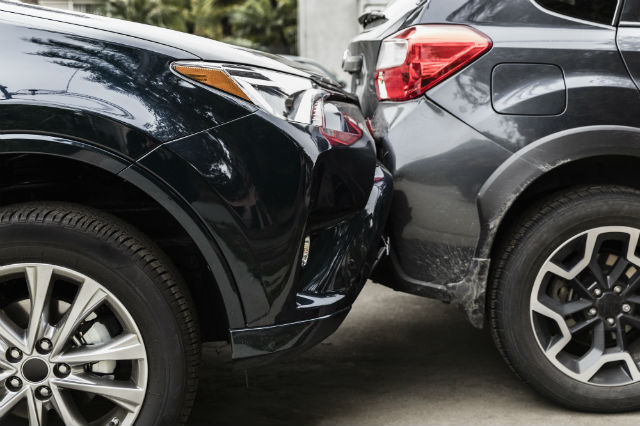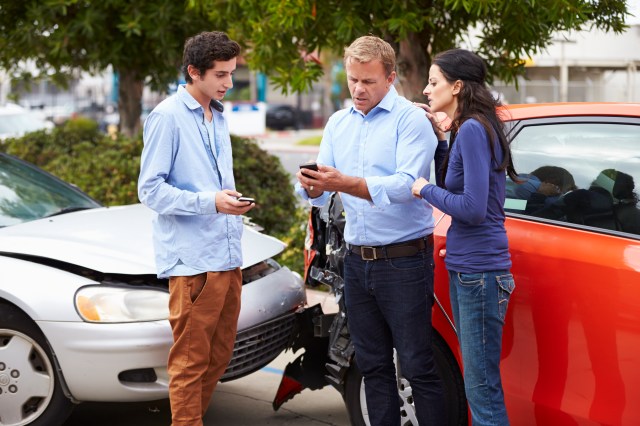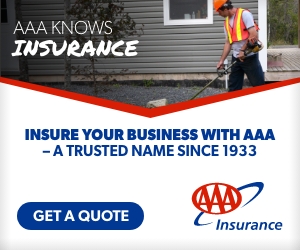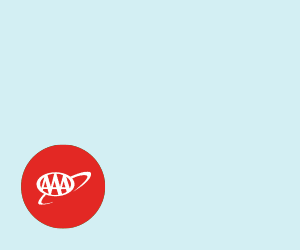Getting into a car crash isn’t something we plan on. It’s a scenario we’d generally like to avoid. But when it does happen, how do insurance companies determine fault?
Unless the crash you were involved in can be considered no-doubt liability, such as rear-end or left-turn collisions, there will likely be a process you and your insurance company go through to determine who exactly is at fault. We asked a AAA Insurance expert how it works.
Click here for a refresher on what to do after a car crash.
Contributary vs. Comparative Laws
“There are different state laws that regulate fault, how it’s determined and even whether you can collect from the other party or not,” said AAA Northeast’s Vice President of Insurance Operations Gregory Smolan.
Whether or not you can collect payment after an accident depends on if you live in a contributary state or a comparative state. Living in a contributary state means that if you’re found to be even a small amount at fault, you can’t collect from the other driver. In comparative states, compensation is awarded based on your determined percentage of fault.
This map shows contributary and comparative negligence laws by state.
In the Northeast, states like Massachusetts, New Jersey and New York have no-fault insurance, which are laws that require each driver injured in an accident to file a claim with their own insurance company, so that each person is compensated for their medical bills, regardless of who was at fault.
What To Do Post-Crash
“Typically, when a collision happens, the first line of defense is self-reporting,” Smolan advised. There are many times the police are called, and they’ll do an accident report that then goes to the adjuster. Usually, the way the report is written will give you a determination of who was probably in the wrong.”
In many cases, bystanders have a part to play in determining who’s ultimately at fault. “If I’m an adjuster,” Smolan said. “I’ll look at the police report, I’ll take statements from our driver and get their version of events. If there are any witnesses, I’d even call them for a statement. But we also have traffic cams now.”
Speaking of cameras, how about dash cams? Are they a hindrance to the fault process, or do they help? Smolan said they’re a great tool to have in your arsenal in the event of an crash. “Certainly, if you’re in a collision and you’re trying to determine fault, a dash cam is video proof just like a traffic cam. It’s totally valid.”
Do you have usage-based insurance? Even better. “Some folks have UBI, so they’re tracking their driving habits on their phones. If you can go back and see proof in those stats, they can help disprove someone else’s accusation.”
Essentially, if you’re trying to build a case, accumulating proof with photos, witnesses and the police report are your best bet. “You may still technically be at fault,” said Smolan. “But at least you’ve produced as much evidence as you can to the contrary.”

Once all the information about the accident has been received and the insurance companies begin their investigation, each will submit a determination of fault percentages. Surprisingly, these percentages aren’t precise and are only an estimate. “There’s no mathematical equation,” Smolan said. A lot of what ultimately determines fault is good old negotiation with the other party. If there is a disagreement with the results and both parties can’t come to an agreement, the situation will be handled by an arbitrator who’ll review all the facts and make a final decision.
If you find yourself in a scenario where the other party involved in the accident doesn’t have insurance, not all is lost. “Check with your own carrier about your uninsured motorist or under-insured motorist coverage to see if you have coverage on your policy,” Smolan said.
Top Takeaways
- First and foremost, make sure nobody’s injured and that your vehicles are in a safe spot before starting the claims process.
- Take pictures of damage and the location.
- Exchange information with the other party and contact your insurance company right away.
- If there are bystanders, get their names and numbers.
- If there is any damage, get the police there to submit a report.
- Don’t admit fault at the scene. “It’s not up to you to determine fault or admit fault at the site,” said Smolan. “Let the process play out.”
Find out more about AAA auto insurance.


















